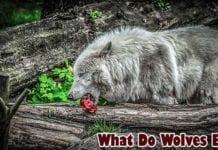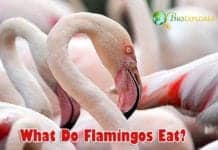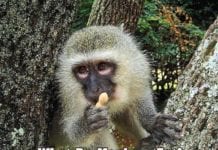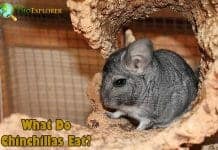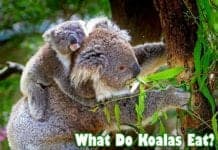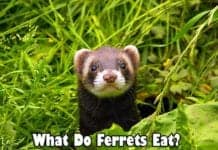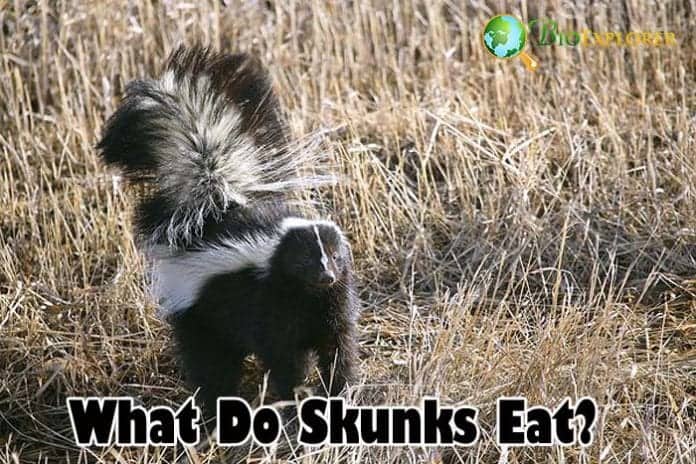
Skunks are small furry animals notable for their black and white-colored fur. These animals are omnivorous, meaning they feed both plants and animals. A typical skunk diet consists of plants, eggs, small mammals (such as rodents, moles), fish, worms, reptiles, fruits, turtles, and insects (such as bees).
Table of Contents
What Do Skunks Eat?
| American Hog-nosed Skunk | Conepatus leuconotus | Insects, small reptiles, carrion, pear cactus, and berries |
| Hooded Skunk | Mephitis macroura | Insects, rodents, shrews, and plant matter. |
| Eastern Spotted Skunk | Spilogale putorius | Insects, native field mice, corn. Cottontails, portions of fruits, bird eggs, and birds. |
| Palawan Stink Badger | Mydaus marchei | Arthropods and worms. |
![]()
Skunks Diet by Types
Until much recently, skunks were classified in the Mustelid family. After a molecular analysis, it was revealed that skunks were different from Mustelids, hence their classification in the family Mephitidae.
Additionally, it is also worth noting that stink badgers are currently considered members of the skunk family. With this insight, the different types of skunks discussed in this section will include a member of the various genera of the skunk family and an example of the stink badger.
What Do American Hog-nosed Skunks Eat?
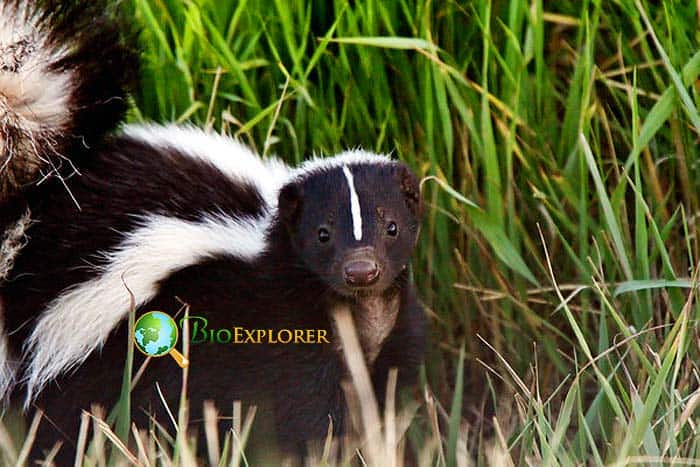
The American hog-nosed skunk is one of the largest skunk species that can grow to 82.5cm. This skunk is notable for its broad white stripe that runs from the head to the tail.
| Animalia | Carnivora | Mephitidae | Conepatus | Conepatus leuconotus |
- The primary diet of the American hog-nosed skunk is made up of insects. This skunk also dines on small reptiles, carrion, pear cactus, and berries.
- The hunting strategy used by the American-hog nosed skunk is facilitated by their excellent sense of smell, giant claws, and powerful forelimbs, which they use to locate and dig up buried insects.
![]()
What Do Hooded Skunks Eat?
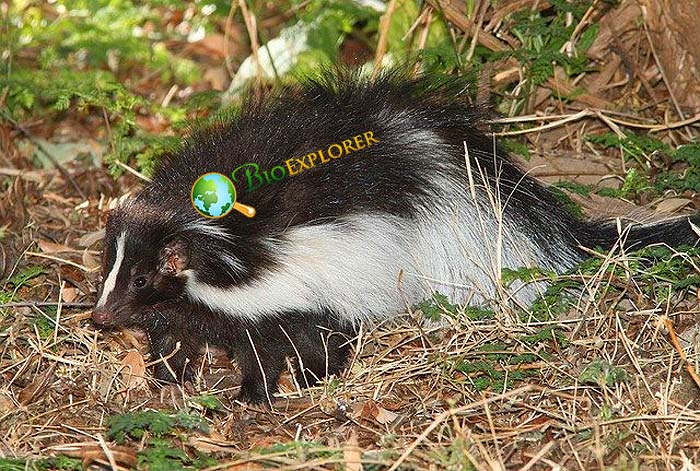
The hooded skunk is a predominantly Mexican species. The hooded skunks are notable for their long hairs on the back of the head and neck that give them the appearance of a hood.
| Animalia | Carnivora | Mephitidae | Mephitis | Mephitis macroura |
- The hooded skunks are mainly insectivorous , meaning they feed on insects.
- These skunks have also been observed to dine on small vertebrates with the example of rodents and shrews.
- The hooded skunks also consume plant matter.
- The hunting strategy used by the hooded skunk entails tact.
- Skunks slowly stalk their prey and make use of dense vegetation for cover.
![]()
What Do Eastern Spotted Skunks Eat?
.
| Animalia | Carnivora | Mephitidae | Spilogale | Spilogale putorius |
The eastern spotted skunks are common in the eastern parts of the United States. The members of this species are notable for their enormous bodies and their small tapered heads. The eastern spotted skunk can grow to lengths of 11.5 – 34.5 cm (head to body).
- The eastern spotted skunks are omnivorous . It is worth noting that their diet varies depending on the different seasons.
- During winter, the eastern spotted skunk feeds on corn and cottontails. These skunks predominantly feed on insects during winter.
- During summer, they dine mainly on insects with small portions of fruits, bird eggs, and birds. They are likely to be found dining on insects, and native field mice during summer.
- The eastern spotted are great rodent catchers. The strategy they use to hunt their prey, especially rodents, is chasing after them.
![]()
What Do Palawan Stink Badgers Eat?
The Palawan stink badger was previously classified in the genus Mustelidae, but this changed much recently following a molecular analysis that showed that stink badgers were an old-world genus within the skunk family.
| Animalia | Carnivora | Mephitidae | Mydaus | Mydaus marchei |
- The Palawan stink badger has a generally dark brown fur. Other Palawan stink badgers have pale brown fur.
- These badgers also spot a yellow path at the top of their heads.
- The Palawan stink badger feeds mostly on small arthropods and worms.
- The Palawan badger prefers living in areas with soft soils because that would aid their digging process as they hunt for their prey.
![]()
When Do Skunks Eat?
Skunks are mostly nocturnal. They tend to look for food and eat during the nightfall hours.
![]()
How Often Do Skunks Eat?
Skunks tend to feed as often as they can as long as they realize their daily energy threshold.
![]()
What Eats Skunks?
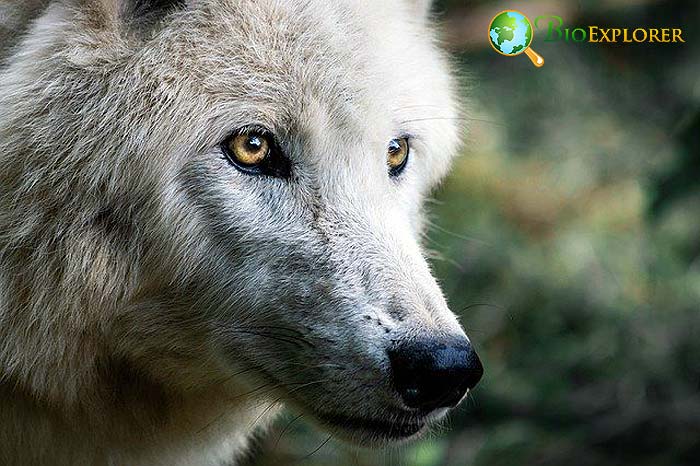
As a preventive mechanism, skunks spray an anal liquid with a foul smell against predators to warn them. Despite this preventive scent, examples of organisms that hunt skunks include wolves, Great Horned Owl and foxes.
![]()
Where Do Skunks Fit in the Animal Food Chain?
Skunks are essential creatures to the animal food chain, and without them, the food web would be thrown out of balance. Skunks feed on arthropods and a vast range of small animals, and because of this role, they help keep the population of these organisms under check.
![]()
Skunks are an excellent food source for organisms that hunt them. Because of this role, skunks help the animals that predate them, thrive, and survive.
![]()


